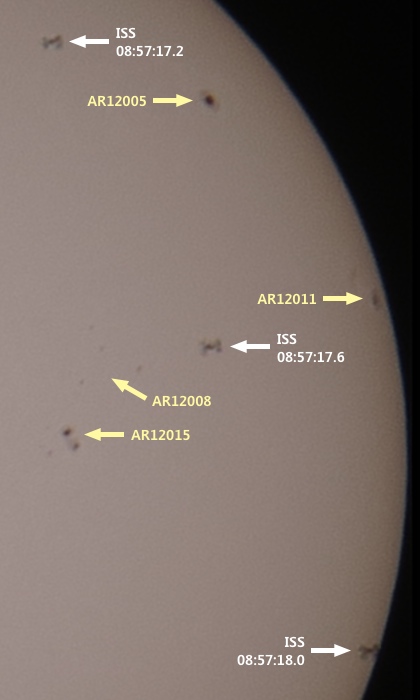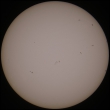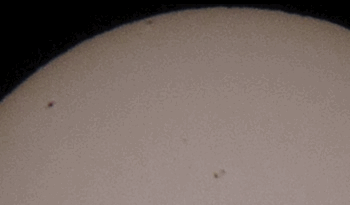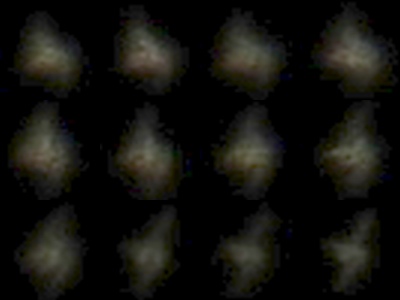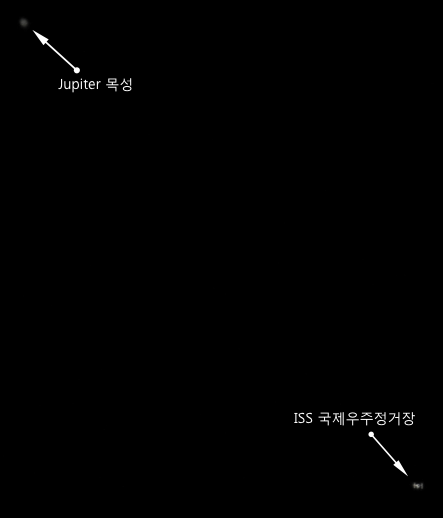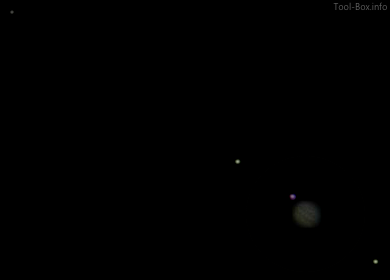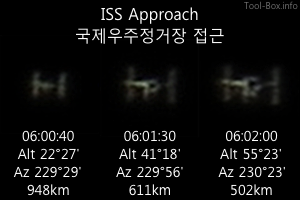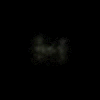A sideways ISS pass
Posted by Wesley on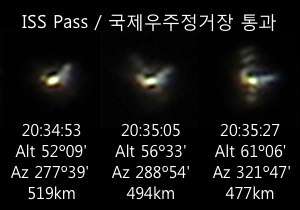
ISS pass for April 6, 2014
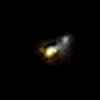
ISS turns
The panels form the two columns of the "H" shape when viewed from the "front". But in these images, the shape is more like a mirrored "ㅔ". I guess this view can reveal a docking spaceship, if there is one and is big enough.
Device: Canon SX50 HS
Settings: 1200mm (2x enlarged) - ISO 160 - 1/320s - f/6.5
Filters: None
Time: 2014-04-06 20:35 KST
Location: Suwon, Korea
Max Magnitude: -3.6
